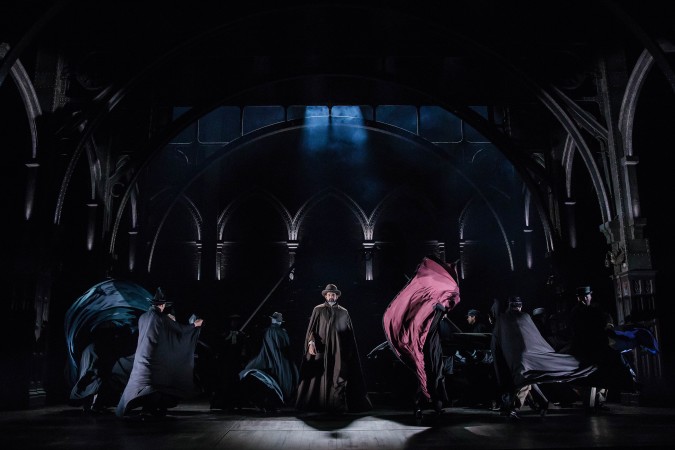“Cursed Child” Projection and Video Designer Talks Making Digital Magic
The use of digital media in live theater productions has become more prevalent in recent years. Video and projection art provides opportunities to expand beyond the physical set onstage and take a theater audience to new realms. That’s the case for audiences at all three (soon to be four) Harry Potter and the Cursed Child productions.
“I’m very interested in the interaction between the video media, and then human being, and then the environment in which they sit in, and then how that all comes together to create this complete world,” says Finn Ross, the projection and video designer on Harry Potter and the Cursed Child – Parts One and Two.
MuggleNet sat down with Ross at the Digital Media Symposium in Binghamton, New York, where he was a keynote speaker. The symposium was hosted by the United States Institute for Theatre Technology and preceded the LUMA Projection Arts Festival, which transforms the city’s downtown buildings into animated works of art.
Ross has been creating digital components for live entertainment for about 15 years and has an extensive résumé. His Broadway and West End credits include The Curious Incident of the Dog in the Night-Time, Mean Girls, Frozen, and of course, Cursed Child.
You may not have even realized there was a video designer on Cursed Child. If that’s the case, Ross says he “would have done [his] job really well.” He explains that video wasn’t originally part of the plans for the play, with the creators wanting to exude a sort of old-school theater vibe.
“I think the idea of video, to begin with, was not really part of Cursed Child because that wasn’t what they wanted their world to be, but the effect that video delivers in Cursed Child was the only way that they could think of delivering that effect,” Ross explains.

Ross says he was tasked with making “video that didn’t look like video” and hiding the evidence. The technology used to deliver the video effects is hidden away and disguised within the theater’s architecture. If you’re like me and stand up at intermission with the sole purpose of finding out where the projectors were, you may see them, but if you’re not looking, they’re not immediately obvious.
“It’s creating a palpable sense of magic by hiding your tricks,” says Ross.
When Cursed Child first took over the Palace Theatre in London’s West End, Ross mapped the surface of the set. He says this process involved getting ahold of the engineers’ 3D models to make sure everything lined up perfectly over the top of the physical setting. It’s a process that has now been repeated four times, most recently at the Curran in San Francisco, where the play opens this October. Every theater’s set looks the same but has different dimensions that mean a whole new video has to be designed to fit them.
“It takes two to three weeks to do all the modeling but then actually three days to do the animation, which is the hilarious thing, that actually, the prep is very extensive,” says Ross. “And then if your models are good, if your plans are good, then you arrive on-site and it works – in theory.”
Adhering to the tagline “Keep the Secrets,” we didn’t badger Ross to reveal everything behind the show’s effects. To find out more about how video is used to create magic onstage, you’ll just have to experience it yourself.
You can watch our full interview with Ross or read through the transcript below.
